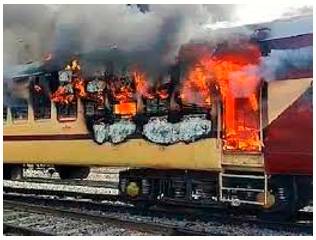
Following violence perpetrated by anxious job seekers, Indian Railways has suspended the ongoing recruitment drive for non-technical popular categories (NTPC). IR has also set up a committee to examine doubts raised by some among the 125 lakh candidates vying for 35,281 jobs. IR, which has a workforce of about 12.27 lakh, is India’s largest employer and likely the largest employer of low-skill workers. While arson is inexcusable, the sharp anxiety about the integrity of IR’s recruitment process is really a manifestation of a jobs crisis, particularly in Bihar and UP, states where the violence happened.
India’s employment scenario is bleak. Consider GoI’s last available urban jobs report of January-March 2021. In that quarter, there was a regression in the quality of jobs compared to January-March 2020, the last pre-pandemic quarter. Salaried jobs dropped by 2.4 percentage points to 48.1%. These jobs shifted to casual labour and self-employed categories. The crisis was particularly acute among the youth (15-29). In January-March 2021, only 38.4% of the youth population was in the job market, 1.1 percentage points lower than the previous year. There was no gender disparity, with roughly the same proportion of men and women dropping out of the job market.
This trend among the youth was more pronounced in Bihar and UP. Both states lagged the national average, with Bihar being particularly bad. Here just around one in four youth, or 25.5%, was available for work. This jobs data is a proxy for opportunities in these states because in Gujarat and Tamil Nadu around 44% of the youth is in the job market. All of this points to the need for GoI to stay sharply focussed on India’s jobs crisis. In an era where even Apple and Nike have embraced a factory-less model, India should grab labour-intensive manufacturing opportunities. The Union Budget provides a platform to signal India’s intent.



